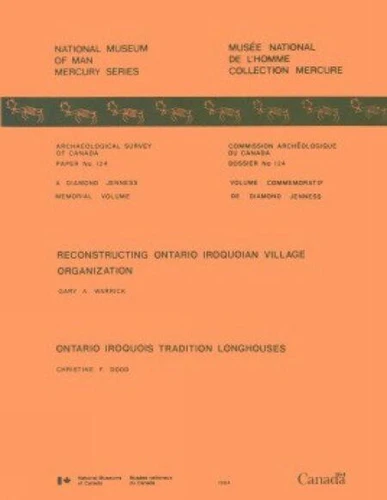Reconstructing Ontario Iroquoian Village Organization — Ontario Iroquois Tradition Longhouses
Par : ,Formats :
Disponible dans votre compte client Decitre ou Furet du Nord dès validation de votre commande. Le format PDF est :
- Compatible avec une lecture sur My Vivlio (smartphone, tablette, ordinateur)
- Compatible avec une lecture sur liseuses Vivlio
- Pour les liseuses autres que Vivlio, vous devez utiliser le logiciel Adobe Digital Edition. Non compatible avec la lecture sur les liseuses Kindle, Remarkable et Sony
 , qui est-ce ?
, qui est-ce ?Notre partenaire de plateforme de lecture numérique où vous retrouverez l'ensemble de vos ebooks gratuitement
Pour en savoir plus sur nos ebooks, consultez notre aide en ligne ici
- Nombre de pages456
- FormatPDF
- ISBN1-77282-118-7
- EAN9781772821185
- Date de parution01/01/1984
- Protection num.pas de protection
- Taille63 Mo
- Infos supplémentairespdf
- ÉditeurMercury-Mercure
Résumé
The first study presents a model of Ontario Iroquoian village organization, based on fourteen Late Iroquoian (ca. A. D. 1450-1650) village plans, historic documents and comparative data on contemporary communities. It is argued that socio-political factors (village demography, socio-economics and government) were the major determinants of Iroquoian village arrangement. In light of the socio-political model suggested in part one of this book, the second study interprets changes in longhouse village planning, throughout the Ontario Iroquois sequence (A.
D. 700 - 1650), as responses to evolutionary trends in Iroquoian warfare patterns and political organization. Published in English.
D. 700 - 1650), as responses to evolutionary trends in Iroquoian warfare patterns and political organization. Published in English.
The first study presents a model of Ontario Iroquoian village organization, based on fourteen Late Iroquoian (ca. A. D. 1450-1650) village plans, historic documents and comparative data on contemporary communities. It is argued that socio-political factors (village demography, socio-economics and government) were the major determinants of Iroquoian village arrangement. In light of the socio-political model suggested in part one of this book, the second study interprets changes in longhouse village planning, throughout the Ontario Iroquois sequence (A.
D. 700 - 1650), as responses to evolutionary trends in Iroquoian warfare patterns and political organization. Published in English.
D. 700 - 1650), as responses to evolutionary trends in Iroquoian warfare patterns and political organization. Published in English.



